Frequently Asked Questions
What's your style or bani?
This style isn’t one that can be categorized under a specific Baani or school, but rather one that has imbibed and incorporated various aspects of music from other instruments, vocals, and not just veena. By striving to represent musical integrity and evolution as accurately as possible, most of my techniques had to be figured out through extensive experimentation.
If your question is regarding the fingering deployed, I have worked
extensively to discover alternative techniques for every phrase and
this is an ongoing journey.
Why do you use pickups?
When the focus is on gamakas, anuswarams, pulled phrases, etc. plucks aren’t appropriate. Where plucks are absent the amplitude of the sound produced isn’t always sufficient. When we use an external mic in concert stages, it serves as an extra amplifier for the accompanying percussion and the veena continues to pale out. This is so because the veena’s sound projection is significantly lower than that of, say the mridangam.
It is however possible to capture nuance with a sensitive external mic in a studio setting, like you see here: (YouTube URL).
Veena produces its sound by the vibrations from the board over the kudam (the bridge transmitting vibrations from the string onto the board). A contact pickup over the board tends to mimic the actual vibration quite well; if it also has a acoustic component it becomes truer though not exactly as true without any pickup. AKG C411 is one such pickup.
Do you use any electronic device to increase sustain?
No. All that you hear is simply an amplification of the existing sound; you can hear the decay fairly easily.
What pickups do you use?
For a live concert scenario, I use a 80-20 combination of the AKG C411 and a magnetic pickup (made by Tulsi guitars in chennai). I would ideally prefer going fully acoustic with a combination of the AKG and a bunch of condensers or ribbons, but unfortunately, this is not a tenable solution for live concerts, and it only works for studio recordings.
Having said that, we are also experimenting with several other combinations of mics and pickups.
Tips for practice?
There is practice for instrumental virtuosity, and there is practice for musicality. It’s good to have a bunch of exercises comprising varisais, varnams, chittaswarams, etc that you practise daily, at various tempos. You pick a varisai, start a comfortable tempo, play in that tempo for a while, and change the tempo to be 5bpm faster, And so on. The important thing is to ensure that everyday you stop the practice a few minutes after you think you have reached the end of your tether, thereby ensuring you really push yourself (if we stop at the point we feel pain, there will be no improvement).
Do you teach?
I teach Veena, vocal and layam. At this point, am not able to take beginners due to time constraints (they require fairly regular
classes and cannot be easily assigned exercises that fasten progress and also require a certain musical self-awareness).
Students tend to have varied requirements. Some focus on advanced manodharma, some on compositions, some on the bhava that accompanies
a composition, etc. Interaction is tailored based on the goals of the practitioner.
Who are your inspirations?
I have derived inspiration from across instrumentalists and vocalists. I have also been inspired by the Hindusthani tradition, and sitar in particular.
How do you carry your instrument?
I generally use a fibre case with a lot of internal padding and cushioning for the veena. The case gets checked in in flights.
